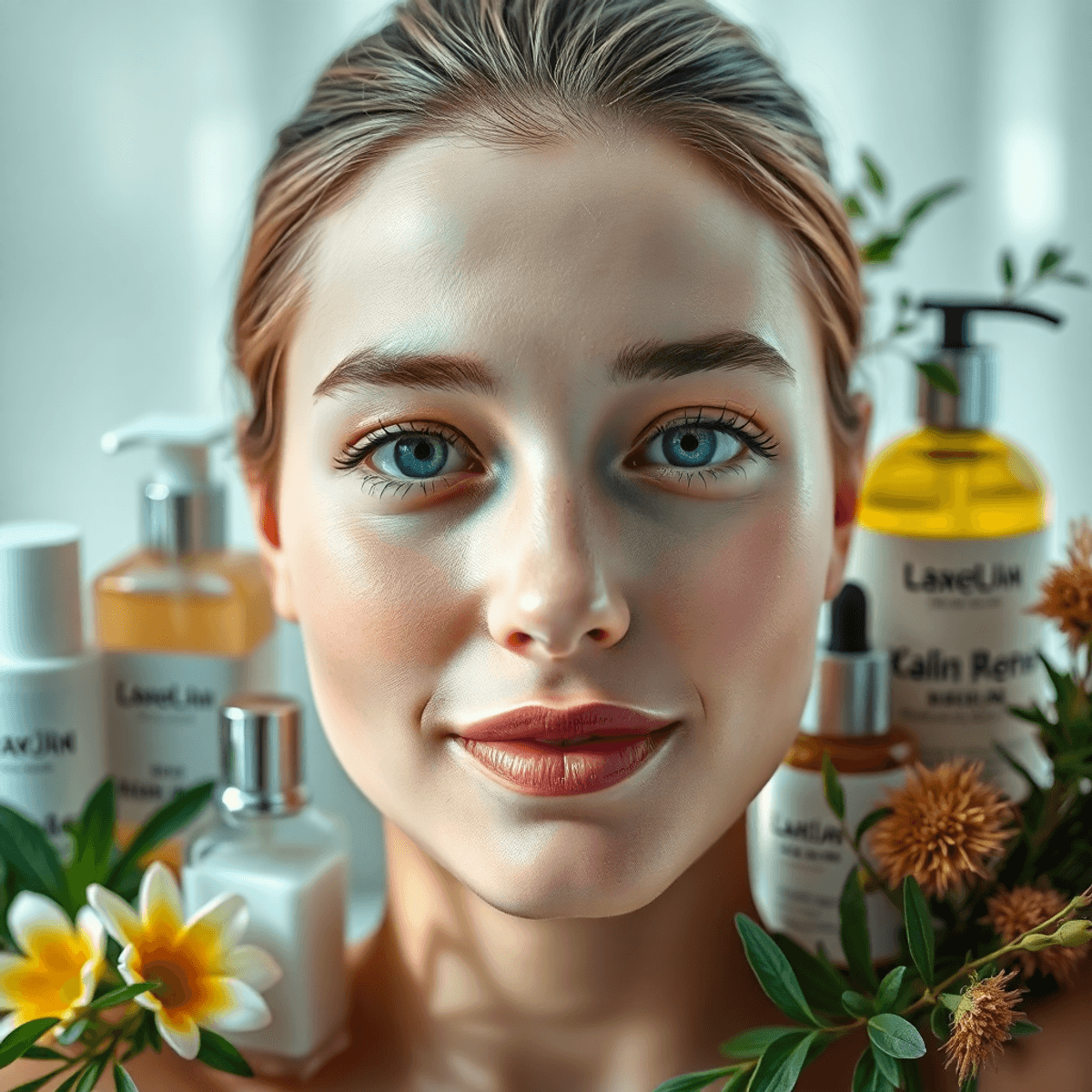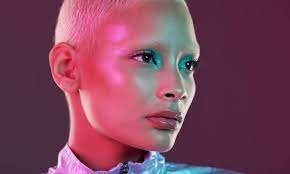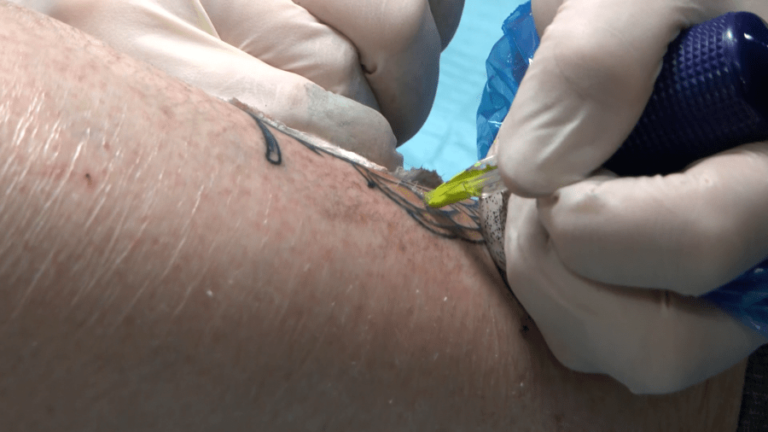How do i get rid of pimples

Introduction
Dealing with pimples can feel like an endless battle. Whether you’re experiencing occasional breakouts or persistent acne, finding effective solutions to get rid of these unwanted spots is a common skincare goal.
This comprehensive guide walks you through proven methods to tackle pimples head-on. You’ll discover:
- Targeted treatments that work quickly on active breakouts
- Prevention strategies to reduce future flare-ups
- Professional solutions for stubborn acne cases
- Natural remedies backed by real results
- Essential lifestyle changes that promote clearer skin
Your journey to clearer skin starts with understanding what causes pimples and identifying the right treatment approach for your specific situation. From simple home remedies to professional dermatological procedures, you’ll learn about various options to address different types of acne – including those frustrating spots that seem to appear at the worst possible times.
This guide equips you with practical knowledge to:
- Choose effective skincare products
- Build a sustainable acne-fighting routine
- Recognize when to seek professional help
- Make informed decisions about treatment options
Ready to transform your skin? Let’s explore the science-backed strategies that can help you achieve and maintain clearer, healthier-looking skin.
Understanding Pimples
Pimples develop when your skin’s pores become blocked with oil, dead skin cells, and bacteria. These small, inflamed spots can appear anywhere on your body, though they commonly affect the face, chest, and back areas.
Common Types of Acne:
- Blackheads: Open bumps with darkened surfaces due to oxidation
- Whiteheads: Closed bumps that remain flesh-colored or white
- Pustules: Red, tender bumps containing pus
- Papules: Small, red, raised bumps without pus
- Cysts: Deep, painful bumps filled with pus that can cause scarring
Your skin naturally produces sebum (oil) through sebaceous glands. When these glands create excess oil, it mixes with dead skin cells and creates a perfect environment for P. acnes bacteria to thrive. This bacteria multiplies inside your pores, triggering inflammation and creating visible pimples.
Hormonal Influences on Acne Development:
- Puberty triggers increased androgen production
- Menstrual cycles cause hormonal fluctuations
- Pregnancy alters hormone levels significantly
- Stress releases cortisol, affecting oil production
- Polycystic ovary syndrome (PCOS) disrupts hormone balance
The formation of a pimple follows a specific pattern. First, your pore becomes clogged with excess oil and dead skin cells. Bacteria then multiply within this blocked pore, causing inflammation. Your immune system responds by sending white blood cells to fight the bacteria, resulting in the characteristic redness and swelling.
Key Factors in Pimple Formation:
- Excess Oil Production
- Overactive sebaceous glands
- Hormonal stimulation
- Genetic predisposition
- Dead Skin Cell Buildup
- Slow skin cell turnover
- Inadequate exfoliation
- Dry skin conditions
- Bacterial Growth
- Presence of P. acnes bacteria
- Warm, moist environment
- Compromised skin barrier
Understanding these fundamental aspects of pimple formation helps you identify
Effective Treatments for Pimples
Getting rid of pimples requires a strategic approach using proven treatments. Let’s explore both over-the-counter solutions and natural remedies that can help clear your skin.
Topical Treatments
1. Benzoyl Peroxide (2.5% – 10%)
- Kills acne-causing bacteria
- Reduces inflammation
- Apply a thin layer to affected areas
- Start with lower concentrations to minimize irritation
- Use once daily, increasing to twice if needed
2. Salicylic Acid (0.5% – 2%)
- Unclogs pores
- Removes dead skin cells
- Prevents future breakouts
- Ideal for blackheads and whiteheads
- Can be used in combination with benzoyl peroxide
3. Retinoids
- Speed up cell turnover
- Prevent clogged pores
- Available in varying strengths
- Apply at night to clean, dry skin
- Use sunscreen during the day
Natural Remedies
1. Tea Tree Oil
- Natural antibacterial properties
- Dilute with carrier oil (1:9 ratio)
- Apply directly to pimples
- Patch test before use
- Results visible within 1-2 weeks
2. Green Tea
- Rich in antioxidants
- Reduces inflammation
- Use as a face wash or spot treatment
- Apply cooled tea bags to inflamed areas
- Can be combined with honey for enhanced effects
3. Honey
- Natural antibacterial properties
- Helps heal damaged skin
- Apply as spot treatment
- Leave on for 10-15 minutes
- Use raw, unpasteurized honey for best results
Body Acne Solutions
1. For Butt Pimples
- Wear loose, breathable clothing
- Use benzoyl peroxide body wash
- Exfoliate gently 2-3 times weekly
- Change clothes after sweating
- Keep skin clean and dry
Quick Solutions: Spot Treatments and Immediate Relief Techniques
Need to tackle a pimple fast? Spot treatments offer targeted solutions for quick results. Here’s your guide to rapid blemish relief:
Fast-Acting Spot Treatments
- Drying Lotions: Apply pink-colored sulfur-based solutions directly on whiteheads before bed
- Hydrocolloid Patches: These stick-on patches extract fluid while protecting the blemish from bacteria
- Concentrated Treatments: Look for products with 2% salicylic acid or 5% benzoyl peroxide for maximum effectiveness
Application Tips for Best Results
- Clean the affected area thoroughly
- Use a cotton swab to apply spot treatments
- Avoid touching or picking the treated area
- Apply treatments at night for longer contact time
- Don’t layer multiple spot treatments – pick one and stick to it
Ice Application Technique
- Wrap ice in a clean cloth
- Hold against the blemish for 1 minute
- Remove for 5 minutes
- Repeat up to 3 times
- Use twice daily for best results
Targeting Different Types of Spots
For Blackheads:
- Use salicylic acid-based spot treatments
- Apply clay masks to affected areas
- Try pore strips for immediate extraction
For Cystic Pimples:
- Ice application reduces swelling
- Use benzoyl peroxide spot treatments
- Apply tea tree oil diluted with carrier oil
For Whiteheads:
- Drying lotions work best
- Hydrocolloid patches speed up healing
- Sulfur-based treatments reduce inflammation
Pro Tips:
- Start with clean, dry skin
- Apply spot treatments before moisturizer
- Don’t pop or squeeze blemishes
- Keep hands away from treated areas
- Allow treatments to dry completely before applying makeup
Building a Skincare Routine for Acne-Prone Skin
Creating an effective skincare routine for acne-prone skin requires careful product selection and consistent application. Your daily regimen should focus on gentle cleansing, proper hydration, and targeted treatments.
1. Choosing the Right Products
A successful skincare routine starts with selecting products specifically formulated for acne-prone skin:
Essential Products for Your Routine:
- Gentle Cleanser: Look for pH-balanced formulas with salicylic acid or glycolic acid
- Non-Comedogenic Moisturizer: Select lightweight, oil-free options
- Broad-Spectrum Sunscreen: Choose SPF 30+ with zinc oxide or titanium dioxide
- Treatment Products: Include spot treatments containing benzoyl peroxide or niacinamide
Key Ingredients to Look For:
- Hyaluronic acid for hydration
- Niacinamide for oil control
- Ceramides for barrier repair
- Alpha-hydroxy acids (AHAs) for gentle exfoliation
Your morning routine should include:
- Gentle cleansing
- Lightweight moisturizer
- Non-comedogenic sunscreen
Your evening routine should incorporate:
- Double cleansing (if wearing makeup)
- Treatment products
- Night moisturizer
Product Application Tips:
- Apply products from thinnest to thickest consistency
- Wait 1-2 minutes between layers
- Use gentle patting motions instead of rubbing
- Start with small amounts to avoid overwhelming your skin
Special Considerations for Different Areas:
- Face: Use dedicated facial products
- Back: Consider benzoyl peroxide body wash
- Chest: Apply products with clean hands
- Scalp: Try medicated shampoos
- Body: Use non-comedogenic body lotions
Remember to patch test new products on a small area for 24-48 hours before full application. Start with one new product at a time to identify potential triggers or allergic reactions.
2. Avoiding Irritating Ingredients
Certain skincare ingredients can trigger breakouts or worsen existing acne. Here’s a list of ingredients to watch out for in your products:
Comedogenic Oils
- Coconut oil
- Wheat germ oil
- Cocoa butter
- Soybean oil
- Palm oil
Harsh Chemicals
- Alcohol (denatured)
- Sodium lauryl sulfate
- Artificial fragrances
- Isopropyl myristate
- Lanolin
Hidden Irritants
- Artificial dyes
- D & C Red pigments
- Acetylated lanolin
- Algae extract
- Carrageenan
These ingredients can disrupt your skin’s natural barrier, increase oil production, or cause inflammation. Check product labels for these potential irritants, particularly in:
- Cleansers
- Moisturizers
- Sunscreens
- Makeup products
- Hair care items that touch your face
Replace products containing these ingredients with gentler alternatives labeled “non-comedogenic” or “oil-free.” Pay special attention to leave-on products like moisturizers and serums, as these have prolonged contact with your skin.
A patch test helps identify personal sensitivities – apply new products on a small area behind your ear for 24 hours before full-face application.
When to Seek Professional Help: Dermatological Treatments for Persistent Acne
Persistent acne that doesn’t respond to over-the-counter treatments needs professional help. A dermatologist can offer specialized treatments designed for your specific skin condition and type of acne.
1. Chemical Peels and Light Therapy
Chemical Peels
- Alpha-hydroxy acid (AHA) peels remove dead skin cells and unclog pores
- Beta-hydroxy acid (BHA) peels penetrate deeper into the skin
- Trichloroacetic acid (TCA) peels target severe acne and scarring
- Results typically show after 3-6 sessions
Light Therapy Options
- Blue light therapy kills acne-causing bacteria
- Red light therapy reduces inflammation
- Photodynamic therapy combines light with photosensitizing agents
- Treatment sessions last 15-30 minutes
Combined Treatment Benefits
- Reduces active breakouts by 50-70%
- Prevents new pimple formation
- Minimizes acne scarring
- Improves overall skin texture
Your dermatologist might suggest these treatments for:
- Cystic acne that won’t respond to topical treatments
- Deep, painful pimples
- Widespread breakouts
- Acne that leaves dark marks or scarring
- Stubborn blackheads requiring professional extraction
The frequency of these treatments depends on:
- Your skin type
- Acne severity
- Treatment response
- Budget considerations
A typical treatment plan may include:
- Initial consultation and skin analysis
- Weekly or bi-weekly sessions
- Regular progress monitoring
- Maintenance treatments as needed
2. Drainage and Extraction Procedures
Professional drainage and extraction procedures offer relief for stubborn, deep-seated acne that resists standard treatments. During these procedures, dermatologists use specialized tools to safely remove trapped debris from your pores.
The process typically includes:
- Sterilization of the affected area
- Softening of the skin through steam or warm compresses
- Precise incision for deep cysts
- Gentle extraction using sterile instruments
- Application of anti-inflammatory medications
Your dermatologist might recommend these procedures for:
- Deep, painful cystic acne
- Stubborn blackheads
- Recurring nodules
- Inflamed pustules
- Treatment-resistant whiteheads
The procedure takes 15-30 minutes, performed under sterile conditions to prevent infection. You’ll notice immediate improvement in the appearance of treated areas, though temporary redness is common. Most patients require multiple sessions spaced 4-6 weeks apart for optimal results.
Note: Never attempt to drain or extract deep pimples at home, as this can lead to scarring and infection. Professional extraction ensures safe removal while minimizing skin damage.
Lifestyle Adjustments That Support Clearer Skin Beyond Topical Treatments Alone
Your skin’s health reflects your daily habits and lifestyle choices. While topical treatments target surface-level concerns, lasting improvements often require deeper lifestyle modifications.
1. Managing Stress Levels Effectively
Stress triggers hormonal changes that can increase sebum production and inflammation, leading to breakouts. Here’s how you can manage stress for better skin health:
Mindfulness Practices
- Practice 10-minute daily meditation sessions
- Try deep breathing exercises during high-stress moments
- Use guided visualization techniques before bedtime
- Download meditation apps like Headspace or Calm for structured guidance
Physical Activities for Stress Relief
- Engage in low-impact exercises like yoga or pilates
- Take 30-minute walks in nature
- Join group fitness classes for social interaction
- Practice gentle stretching exercises during work breaks
Stress-Reducing Lifestyle Changes
- Set boundaries with work and personal commitments
- Create a consistent sleep schedule
- Designate “me-time” for self-care activities
- Limit screen time, especially before bedtime
Practical Stress Management Tips
- Keep a stress diary to identify triggers
- Schedule regular breaks throughout your day
- Practice time management techniques
- Connect with friends or family members regularly
Creating a Stress-Relief Routine
- Start your day with 5 minutes of deep breathing
- Take short walks after meals
- End your day with a relaxing activity
- Maintain a gratitude journal
Research shows that implementing stress management techniques can reduce acne severity by up to 68%. Your skin responds to internal balance, making stress management an essential component of your skincare strategy.
These lifestyle modifications work best when practiced consistently. Small, sustainable changes create significant improvements in both stress levels and skin health. Track your progress by noting changes in your skin’s appearance alongside your stress management efforts.
2. Making Mindful Dietary Choices
Your diet plays a significant role in skin health. Specific foods can either support clear skin or trigger breakouts, making dietary choices crucial in your acne management strategy.
Foods That Support Clear Skin:
- Water-rich fruits and vegetables (cucumber, watermelon, leafy greens)
- Foods high in zinc (pumpkin seeds, chickpeas)
- Omega-3 rich options (salmon, chia seeds)
- Antioxidant-packed berries
- Green tea
Incorporating these best foods for healthy skin into your diet can significantly improve your skin’s appearance.
Foods to Limit or Avoid:
- High-glycemic foods (white bread, sugary snacks)
- Dairy products, particularly skim milk
- Processed foods
- Foods high in saturated fats
Hydration Tips:
- Drink 8-10 glasses of water daily
- Include hydrating foods in your meals
- Monitor caffeine intake
- Track water consumption using apps
Research suggests a strong connection between gut health and skin appearance. Incorporating probiotic-rich foods like kimchi, yogurt, and kefir can support your skin’s natural barrier function. These foods help maintain a healthy gut microbiome, which directly impacts skin inflammation levels.
A food diary can help you identify potential trigger foods. Track what you eat alongside your skin’s condition for 2-3 weeks. This practice helps reveal patterns between specific foods and breakout occurrences, allowing you to make informed dietary adjustments for clearer skin.
Additionally, staying hydrated is key for achieving that glowing skin. Remember to monitor your hydration levels using helpful tools or apps and consider tracking your water consumption for better results.
3. Practicing Good Hygiene Habits
Your daily habits play a crucial role in managing acne breakouts. Small changes in your hygiene routine can create significant improvements in your skin’s health.
Essential Hygiene Practices:
- Change your pillowcase every 2-3 days to prevent bacteria buildup
- Use clean towels for face drying – ideally, a separate towel from your body towel
- Keep your phone screen sanitized, as it frequently touches your face
- Tie back long hair, especially during sleep or exercise
- Clean makeup brushes weekly with gentle soap
Hand-to-Face Contact:
Your hands collect bacteria throughout the day. Train yourself to:
- Avoid touching your face unnecessarily
- Use clean tissues when applying spot treatments
- Wash hands thoroughly before skincare routines
- Never pop pimples with unwashed hands
Exercise-Related Hygiene:
- Remove makeup before working out
- Shower immediately after intense physical activity
- Wear breathable, moisture-wicking workout clothes
- Keep a clean towel handy to pat away sweat during exercise
Additional Tips:
- Replace old makeup products regularly – especially eye products
- Clean your glasses or sunglasses daily
- Keep hair products away from your face
- Use fresh washcloths for cleansing
These hygiene practices create a foundation for clearer skin by minimizing bacterial transfer and reducing potential irritants that can trigger breakouts.
Dealing with Pimple Scars: Treatment Options Available
Pimple scars respond well to several proven treatments:
- Topical Retinoids: Vitamin A derivatives speed up cell turnover, reducing the appearance of dark spots and shallow scars.
- Chemical Peels: Professional-grade peels containing glycolic or salicylic acid help fade discoloration and improve skin texture.
- Microneedling: Tiny needles create controlled micro-injuries, stimulating collagen production for scar healing.
- Laser Therapy: Fractional laser treatments target deep scars while IPL therapy reduces redness and pigmentation.
- Natural Remedies: Rosehip oil promotes skin regeneration, vitamin C serums brighten dark marks, and aloe vera gel soothes and repairs.
For severe scarring, dermatologists might recommend combining treatments for optimal results. Early intervention typically yields better outcomes, making it essential to address scars promptly after acne healing.
FAQs (Frequently Asked Questions)
What are the common causes of pimples?
Pimples are commonly caused by clogged pores, excess oil production, hormonal changes (such as during puberty or pregnancy), and the presence of bacteria on the skin. Understanding these factors can help in managing and preventing breakouts.
What are some effective treatments for pimples?
Effective treatments for pimples include topical medications like benzoyl peroxide and salicylic acid, which help reduce inflammation and clear blocked pores. Natural remedies such as tea tree oil can also be beneficial. It’s important to choose treatments based on your skin type and the severity of the acne.
How can I quickly reduce the size of a pimple?
For quick relief from a pimple, consider using spot treatments that contain active ingredients like salicylic acid or benzoyl peroxide. Additionally, applying ice to the area can help reduce swelling and redness. These methods can provide temporary results while waiting for longer-term solutions.
What should I include in a skincare routine for acne-prone skin?
A skincare routine for acne-prone skin should include non-comedogenic products that won’t clog pores, such as lightweight moisturizers and oil-free sunscreens. It’s also essential to avoid harsh ingredients that can irritate the skin, leading to further breakouts.
When should I seek professional help for acne?
If your acne persists despite over-the-counter treatments or is causing significant distress, it may be time to consult a dermatologist. Professional treatments can include prescription medications, chemical peels, or other therapies tailored to your specific needs.
Can lifestyle changes impact acne development?
Yes, lifestyle changes such as maintaining a balanced diet, staying hydrated, managing stress levels, and practicing good skincare hygiene can significantly impact acne development. Avoiding certain foods known to trigger breakouts may also help improve skin health.










